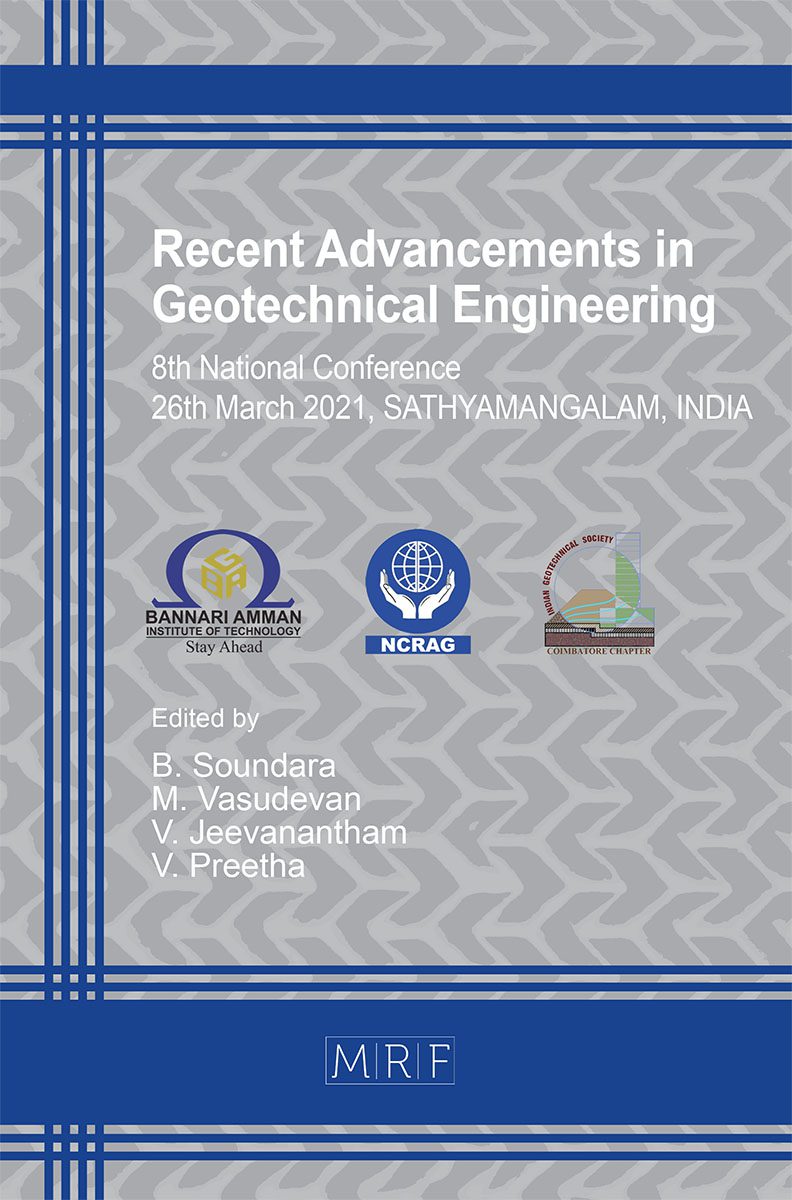Experimental Investigation of Top Mix Permeable Concrete on Pedestrian Pathway
M.P. Indhu, S. Krishnamoorthi, S. Manivel
download PDFAbstract. Our towns are increasingly protected by buildings and water paved pavements. Moreover, the city’s climate is far from normal. Rainwater is not filtered underground due to the absence of the permeability of the common concrete pavement to water and air permeability. In addition, the exchange of heat and humidity with air is difficult for the soil, and it’s not possible to change the temperature and relative humidity of the Earth’s surface in urban areas. At the same time, the safety from both car and foot passenger traffic is limited by a plash on the road on a rainy day. Since the 1980s, work on permeable asphalt pavements has started in developed countries like the US and Japan. For roadway applications, permeable concrete is also widely used as a surface course in Europe and Japan Improving skid resistance and reducing noise from traffic. Only about 20 – 30 MPa can the material reach’s compressive intensity. Due to their low strength, such materials cannot be used as pavement. Only frames, walking routes, parking garages, and park trails can be used with permeable concrete. Utilizing specified analyses, small materials, admixtures, organic intensifiers and changing the ratio, strength and abrasion resistance of the concrete mix, the porous concrete may be greatly enhanced.
Keywords
Hot Island, Permeable, Air Proof Concrete, Pavement, Porosity, Skid Resistance
Published online 8/15/2021, 6 pages
Copyright © 2021 by the author(s)
Published under license by Materials Research Forum LLC., Millersville PA, USA
Citation: M.P. Indhu, S. Krishnamoorthi, S. Manivel, Experimental Investigation of Top Mix Permeable Concrete on Pedestrian Pathway, Materials Research Proceedings, Vol. 19, pp 60-65, 2021
DOI: https://doi.org/10.21741/9781644901618-8
The article was published as article 8 of the book Recent Advancements in Geotechnical Engineering
![]() Content from this work may be used under the terms of the Creative Commons Attribution 3.0 licence. Any further distribution of this work must maintain attribution to the author(s) and the title of the work, journal citation and DOI.
Content from this work may be used under the terms of the Creative Commons Attribution 3.0 licence. Any further distribution of this work must maintain attribution to the author(s) and the title of the work, journal citation and DOI.
References
[1] Agar-Ozbek A S, Weerheijm J, Schlangen E and Van Breugel K 2013 Investigating porous concrete with improved strength: Testing at different scales Construction and Building Materials 41 480-90. https://doi.org/10.1016/j.conbuildmat.2012.12.040
[2] Binitha K, Priyadharshini M and Ragul M 2017 Experimental Investigation of Pervious Concrete for Rigid Pavement IJETER. 5 16-9
[3] Chandrappa A K and Biligiri K P 2016 Pervious concrete as a sustainable pavement material–Research findings and future prospects: A state-of-the-art review Construction and building materials 111 262-74. https://doi.org/10.1016/j.conbuildmat.2016.02.054
[4] Chen Y, Wang K, Wang X and Zhou W 2013 Strength, fracture and fatigue of pervious concrete Construction and Building Materials 42 97-104. https://doi.org/10.1016/j.conbuildmat.2013.01.006
[5] Chindaprasirt P, Hatanaka S, Mishima N, Yuasa Y and Chareerat T 2009 Effects of binder strength and aggregate size on the compressive strength and void ratio of porous concrete International journal of minerals, metallurgy and materials 16 714-9
[6] Ćosić K, Korat L, Ducman V and Netinger I 2015 Influence of aggregate type and size on properties of pervious concrete Construction and Building Materials 78 69-76. https://doi.org/10.1016/j.conbuildmat.2014.12.073
[7] Kholshevnikov V, Shields T, Boyce K and Samoshin D 2008 Recent developments in pedestrian flow theory and research in Russia Fire Safety Journal 43 108-18. https://doi.org/10.1016/j.firesaf.2007.05.005
[8] Kia A, Wong H S and Cheeseman C R 2017 Clogging in permeable concrete: A review Journal of Environmental Management 193 221-33. https://doi.org/10.1016/j.jenvman.2017.02.018
[9] Lian C and Zhuge Y 2010 Optimum mix design of enhanced permeable concrete–an experimental investigation Construction and Building Materials 24 2664-71. https://doi.org/10.1016/j.conbuildmat.2010.04.057
[10] Lian C, Zhuge Y and Beecham S 2011 The relationship between porosity and strength for porous concrete Construction and Building Materials 25 4294-8. https://doi.org/10.1016/j.conbuildmat.2011.05.005
[11] Moretti L, Di Mascio P and Fusco C 2019 Porous concrete for pedestrian pavements Water 11 2105. https://doi.org/10.3390/w11102105































